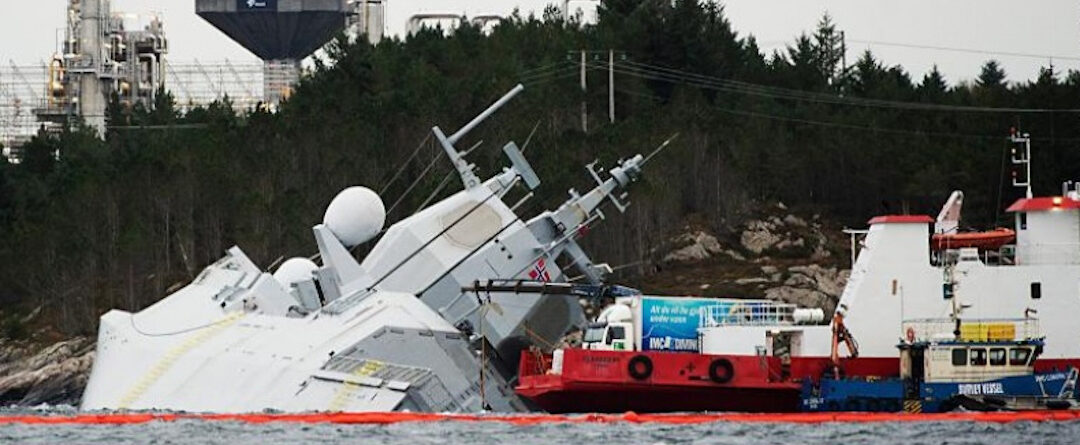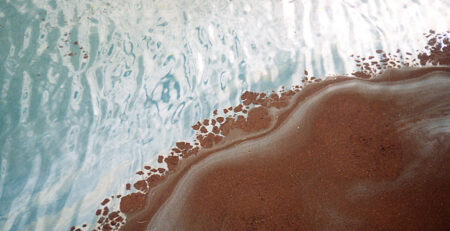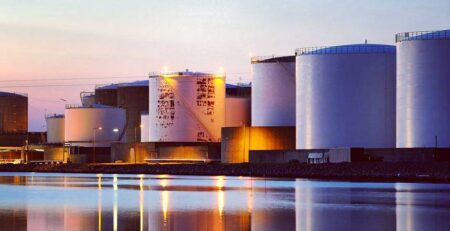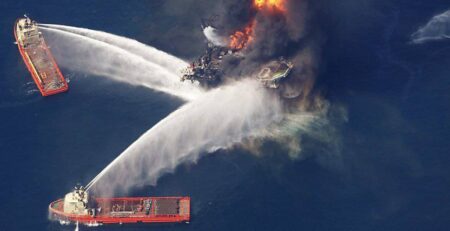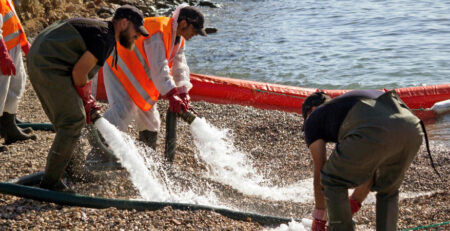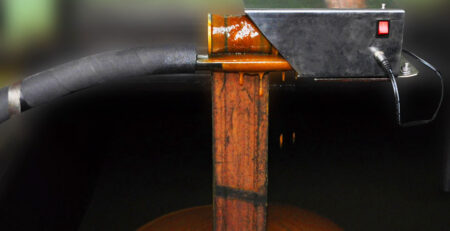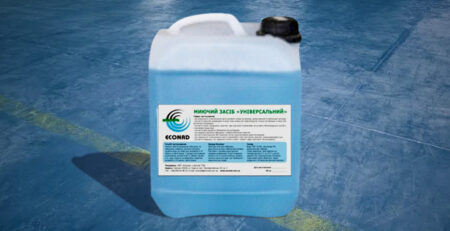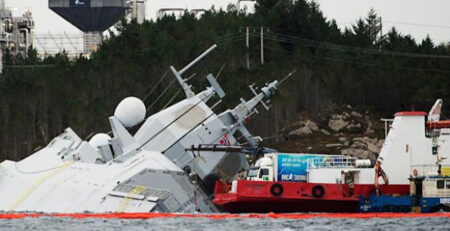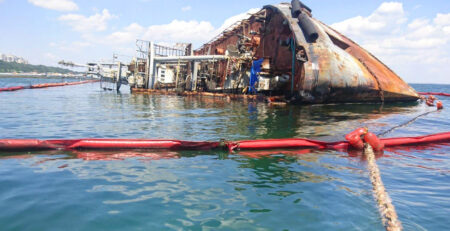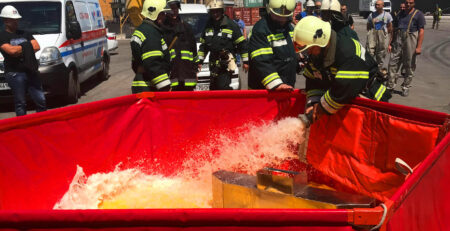International Regulations for Preventing Collisions at Sea PART C
International Regulations: Part C
Lights and signs
Rule 20. APPLICATION
- The rules of this Part must be followed in all weather.
- The rules relating to lights shall be observed from sunrise to sunset, and during that time no other lights shall be displayed except such lights as may not be mistaken for the lights prescribed by these Rules, or impair their visibility and distinctive characteristics, or interfere with proper observation.
- The lights prescribed in this Regulation shall, if available on the ground, also be displayed from sunrise to sunset in conditions of limited visibility and may be displayed in all other circumstances when deemed necessary.
- Rules relating to signs shall be observed during the day.e. The lights and signs prescribed by these Rules shall comply with the requirements of Annex 1 to these Rules.
Rule 21. DEFINITION
- The “top light” is a white light located in the diametric plane of the ship, illuminating a continuous 225° arc of the horizon, and set so as to shine from a direction straight across the bow to 22.5° astern of the transom of each side.
- “Starboard lights” are a green light on the starboard side and a red light on the port side; each of these lights illuminates by a continuous light a horizon arc of 112.5° and is so arranged as to shine from a direction directly across the bow to 22.5° astern of the traverse of the respective side. On a ship of less than 20 m length, the side lights may be combined in a single lantern displayed in the diametral plane of the ship.
- “The stern light is a white light, placed as near the stern as practicable, illuminating by a continuous light the 135° arc of the horizon, and set so as to shine from a direction directly aft to 67.5° to each side.
- “Tow light” is a yellow light having the same characteristics as the “aft” light described in paragraph (c) of this Rule.
- “Circle fire” is a fire that illuminates a 360° arc of the horizon with continuous light.
- “Flashing light” is a light that gives flashes at regular intervals at a rate of 120 or more flashes per minute.
Rule 22. VISIBILITY OF LAMPS
The lights prescribed by these Rules must have the intensity specified in paragraph 8 of Annex 1 to these Rules in order to be visible at the following minimum distances:
- On vessels of 50 m or more in length:
- top light – 6 miles;
- sidelight – 3 miles;
- stern light – 3 miles;
- towing light – 3 miles;
- white, red, green or yellow all-round light – 3 miles;
- On vessels of 12 m or more in length but less than 50;
- mast light – 5 miles, but if the length of the vessel is less than 20 m – 3 miles;
- sidelight – 2 miles;
- stern light – 2 miles;
- towing light – 2 miles;
- white, red, green or yellow all-round light – 2 miles;
- For vessels less than 15 m in length:
- top light – 2 miles;
- sidelight – 1 mile;
- stern light – 2 miles;
- towing light – 2 miles;
- white, red, green or yellow all-round light – 2 miles;
- On stealthy semi-submerged towed vessels or towed objects:
- all-round white light – 2 miles;
Rule 23. VESSELS WITH A MECHANICAL ENGINE UNDERWAY
- a. A power-driven vessel under way must exhibit:
- i. masthead ahead;
- ii. a second masthead behind and above the forward masthead, however
a vessel less than 50 m in length is not required, but may exhibit such a light; - iii. side lights;
- iv. stern light;
- b. A non-displacement hovercraft shall, in addition to the lights prescribed in paragraph (a) of this Rule, exhibit an all-round flashing yellow light.
- c.
- i. A power-driven vessel less than 12 meters in length may, instead of the lights prescribed in paragraph (a) of this Rule, exhibit an all-round white light and side lights;
- ii. a power-driven vessel less than 7 meters in length and having a maximum speed not exceeding 7 knots may, instead of the lights prescribed in paragraph (a) of this Rule, exhibit an all-round white light and shall, if practicable, also exhibit sidelights;
- iii. the masthead light or all-round white light on a power-driven vessel less than 12 m in length may be displaced relative to the centreline of the vessel if it is practically impossible to mount it in the centreline; in this case, side lights should be combined in one lamp installed in the centreline of the ship or as close as practicable to the longitudinal plane in which the mast or all-round white light is installed.
Rule 24. VESSELS ENGAGED IN TOWING AND PUSHING
- a. A power-driven vessel engaged in towing must exhibit:
- i. instead of a light prescribed in Rule 23(a)(i) or (a)(ii), two masthead lights in a vertical line. If the length of the tug, measured from the stern of the towing vessel to the stern of the towed vessel, exceeds 200 m – three such lights.
- ii. side lights;
- iii. stern light;
- iv. a towing light located in a vertical line above the stern light;
- v. diamond-shaped sign in the most visible place, if the length of the tug exceeds 200 m.
- b. When a pushing vessel and a vessel being pushed forward are rigidly connected to form an articulated vessel, they shall be treated as a power-driven vessel and exhibit the lights prescribed in Rule 23.
- c. A power-driven vessel pushing or towing alongside another vessel shall, if not part of an articulated vessel, exhibit:
- i. instead of a light prescribed in Rule 23(a)(i) or (a)(ii), two masthead lights in a vertical line;
- ii. side lights;
- iii. stern light;
- d. A power-driven vessel to which paragraphs (a) or (c) of this Rule apply must also comply with Rule 23(a)(ii).
- e. A vessel or object towed, other than those referred to in paragraph (g) of this Rule, must exhibit:
- i. side lights;
- ii. stern light;
- iii. diamond-shaped sign in the most visible place, if the length of the tug exceeds 200 m.
- f. Any number of vessels being towed alongside or pushed in a group must be covered as one vessel:
- i. a vessel being pushed forward, if it is not part of an articulated vessel, shall display sidelights forward;
- ii. a vessel towed alongside should exhibit a stern light and side lights in the forward part.
- g. A stealthy semi-submerged towed vessel or towed object, or a combination of such towed vessels or towed objects, shall exhibit:
- i. if their width is less than 25 m, one all-round white light at or near the front and the same light at or near the stern, except for “dragons” who may not light at or near the front;
- ii. with a width of 25 m or more, two additional all-round white lights at or near the side ends;
- iii. if they are longer than 100 m, additional all-round white lights between the lights prescribed in subparagraphs (i) and (ii), so that the distance between the lights does not exceed 100 m;
- iv. a diamond-shaped sign at or near the aft end of the last object towed and, if the length of the tow exceeds 200 m, an additional diamond-shaped sign, placed in the most visible position ahead, as far as practicable.
- h. If, for any material reason, the vessel or object towed is unable to display the lights or shapes prescribed in paragraphs (e) or (g) of this Rule, every reasonable effort shall be made to illuminate the vessel or object towed, or at least least indicate the presence of such a vessel or object.
- i. If, for any substantial reason, a vessel not normally engaged in towing operations is unable to display the lights prescribed in paragraphs a) or (c) of this Rule, when she is engaged in towing another vessel in distress or in need of assistance, she is not required to put out those lights. Every possible measure should be taken to show the nature of the relationship between the towing and the towed vessel as set out in Rule 36, in particular to illuminate the towline.
Rule 25. SAILING VESSELS UNDERWAY AND VESSELS AT THE OARS
- a. A sailing vessel underway must display:
- i. side lights;
- ii. stern light;
- b. On a sailing vessel less than 12 m in length, the lights prescribed in paragraph (a) of this Rule may be combined in a single lamp displayed on or near the top of the masthead where it can best be seen.
- c. A sailing vessel under way may, in addition to the lights prescribed in paragraph (a) of this Rule, exhibit at or near the top of the mast in the best position visible, two all-round lights in a vertical line, the upper of which shall be red and the lower green, but these lights must not be exhibited in conjunction with a combination lamp authorized under paragraph (b) of this Rule.
- d.
- i. A sailing vessel less than 7 m in length shall, if practicable, exhibit the lights prescribed in paragraphs (a) or (b) of this Rule, but if the vessel does not display them, she shall carry an electric torch or a lit lantern with a white light at the ready. must be set well in advance to avoid collision.
- ii. A vessel under oars may exhibit the lights prescribed in this Rule for sailing vessels, but if she does not exhibit them, she shall carry an electric torch or a lit lantern with a white light at the ready, which shall be exhibited well in advance to prevent collision.
- e. A vessel under sail and at the same time propelled by a mechanical propulsion system shall display a sign in the form of a cone pointing downwards in the most conspicuous place ahead.
Rule 26. Fishing Vessels
- a. A vessel engaged in fishing, when under way or at anchor, shall exhibit only the lights and shapes prescribed by this Rule.
- b. A vessel engaged in trawling, i.e. dragging a dredge or other fishing gear in the water, must display:
- i. two all-round lights in a vertical line, the top being green and the bottom white, or a sign consisting of cones apex together in a vertical line
one above the other; a vessel less than 20 m in length may display a basket instead of this mark; - ii. fire behind and above the green all-round fire; a vessel less than 50 m in length is not required, but may exhibit such a light;
- iii. if the ship has a course through the water, then in addition to the lights prescribed in this paragraph, side lights and a stern light.
- i. two all-round lights in a vertical line, the top being green and the bottom white, or a sign consisting of cones apex together in a vertical line
- c. A vessel engaged in fishing, with the exception of vessels engaged in trawling, may exhibit:
- i. two all-round lights arranged in a vertical line, the upper one being red and the lower one white, or a sign consisting of two cones, vertices together, placed in a vertical line one above the other; a vessel less than 20 meters in length may display a basket instead of this mark;
- ii. if the swept gear extends horizontally into the sea for more than 150 m from the vessel, then in the direction of these gear – a white all-round light or a sign in the form of a cone with the top up;
- iii. if the ship is moving through the water, then in addition to the lights prescribed in this paragraph, side lights and a stern light.
- d. A vessel engaged in fishing in the vicinity of other vessels engaged in fishing may exhibit the additional signals described in Annex 2 to these Rules.
- e. A vessel not engaged in fishing shall not exhibit the lights and shapes prescribed by this Rule; it shall exhibit only the lights and shapes prescribed for ships of the appropriate length.
Rule 27. VESSELS UNABLE TO STEER OR RESTRICTED IN THEIR ABILITY TO MANEUVER
- a. (a) A ship not under command must display:
- i. two red all-round lights located in a vertical line in the most visible place;
- ii. two balls or similar marks in a vertical line where they can best be seen;
- iii. if the ship is moving through the water, then in addition to the lights prescribed in this paragraph, side lights and a stern light.
- b. A vessel restricted in her ability to manoeuvre, other than a vessel engaged in mine clearance operations, shall exhibit:
- i. three all-round lights in a vertical line where they can best be seen. The top and bottom of these lights should be red and the middle one should be white;
- ii. three signs located in a vertical line in the most visible place. The top and bottom of these signs should be balls, and the middle diamond;
- iii. if the vessel is moving through the water, in addition to the lights prescribed in paragraph (i), the mast light or lights, side lights and stern light;
- iv. if the vessel is at anchor, in addition to the lights or shapes prescribed in subparagraphs (i) and (ii), a light, lights or shape prescribed in Rule 30.
- c. A power-driven vessel engaged in a towing operation which significantly limits the ability of the towing vessel and the vessel being towed to deviate from her course shall, in addition to the lights or shapes prescribed in Rule 24(a), exhibit the lights and shapes prescribed in subparagraphs (i) and ( ii) paragraph (b) of this Rule.
- d. A vessel engaged in dredging or underwater operations, when restricted in her ability to maneuver, shall display the lights and shapes prescribed in subparagraphs (i), (ii) and (iii) of paragraph (b) of this Rule and, if there is an obstruction to the passage of another vessel, must additionally exhibit:
- i. two all-round red lights or two balls in a vertical line to indicate the side on which the obstruction exists;
- ii. two all-round green lights or two diamonds arranged in a vertical line to indicate the side from which another vessel may pass;
- iii. if it is at anchor, the lights or shapes prescribed in this paragraph in lieu of the lights or shapes prescribed in Rule 30.
- e. When the dimensions of a vessel engaged in diving operations make it practically impossible for her to exhibit all the lights and shapes prescribed in paragraph (d) of this Rule, she shall display:
- i. three all-round lights located vertically in the most visible place. The top and bottom of these lights should be red and the middle light should be white;
- ii. flag A according to the International Code of Signals, made in the form of a rigid shield with a height of at least 1 m. Measures must be taken to ensure that this flag is visible all around.
- f. A vessel engaged in mine clearance work, in addition to the lights prescribed for power-driven vessels by Regulation 23, or the lights or shape prescribed for a vessel at anchor by Regulation 30,
must display three all-round green lights or three balls accordingly. One of these lights or shapes must be displayed near the top of the foremast and the other two on the fore-yard. These lights or signs indicate that the other
it is dangerous for a vessel to approach a vessel engaged in mine clearance work at a distance of less than 1000 m. - g. Vessels less than 12 m in length, other than those engaged in diving operations, are not required to exhibit the lights and shapes prescribed by this Rule.
- h. The signals prescribed by this Rule are not signals for ships in distress requiring assistance. Such signals are given in Appendix 4 to these Rules.
Rule 28. SHIPS CONSTRAINED BY THEIR DRAUGHT
A ship of restricted draft may display, in addition to the lights prescribed in Rule 23 for mechanically propelled ships, three red circular lights arranged in a vertical line, or a cylinder, in the most conspicuous position.
Rule 29. PILOT BOATS
- a. The vessel in the performance of pilotage duties must exhibit:
- i. on the top of the mast or near it – two all-round lights located in a vertical line; the top of these lights should be white and the bottom red;
- ii. if it is on the move, then additionally – side lights and a stern light;
- iii. if it is at anchor, then, in addition to the lights prescribed in subparagraph (i), the light or mark prescribed in Rule 30 for a vessel at anchor.
- b. A pilot vessel not engaged in pilotage duties shall exhibit the lights or shapes prescribed for a similar vessel of appropriate length.
Rule 30. SHIPS AT ANCHOR AND SHIPS AGROUND
- a. A vessel at anchor shall display in the most conspicuous place:
- i. in the bow of the vessel – a white all-round light or ball;
- ii. at or near the stern and below the light prescribed in subparagraph (i), an all-round white light.
- b. A vessel of less than 50 meters in length may exhibit an all-round white light where it can best be seen in lieu of the lights prescribed in subparagraph (a) of this Rule.
- c. A vessel at anchor may, and a vessel over 100 m in length, also use the available working lights or other equivalent lights to illuminate her decks.
- d. A vessel aground shall display the lights prescribed in paragraph (a) or (b) of this Rule and, in addition, in a position where they can best be seen:
- i. two red all-round lights arranged in a vertical line;
- ii. three balls arranged in a vertical line.
- e. A vessel less than 7 m in length at anchor or aground, when not in a narrow passage, in the fairway, or near an anchorage, or in areas where other vessels normally navigate, is not required to exhibit the lights or shapes prescribed in paragraphs (a), (b) or (d) of this Rule.
- f. A vessel less than 12 m in length aground is not required to exhibit the lights and shapes prescribed in subparagraphs (i) and (ii) of paragraph (d) of this Rule.
Rule 31. HYDROPLANES
If it is impracticable for a seaplane to display lights or signs which, by their characteristics or arrangement, would meet the requirements of the Regulations of this Part, it shall display lights and signs which, by their characteristics and arrangement, would be as close to the requirements of the Regulations as practicable.
International Regulations: Part D – https://econadin.com/en/international-regulations-for-the-prevention-of-collisions-at-sea-part-d/

